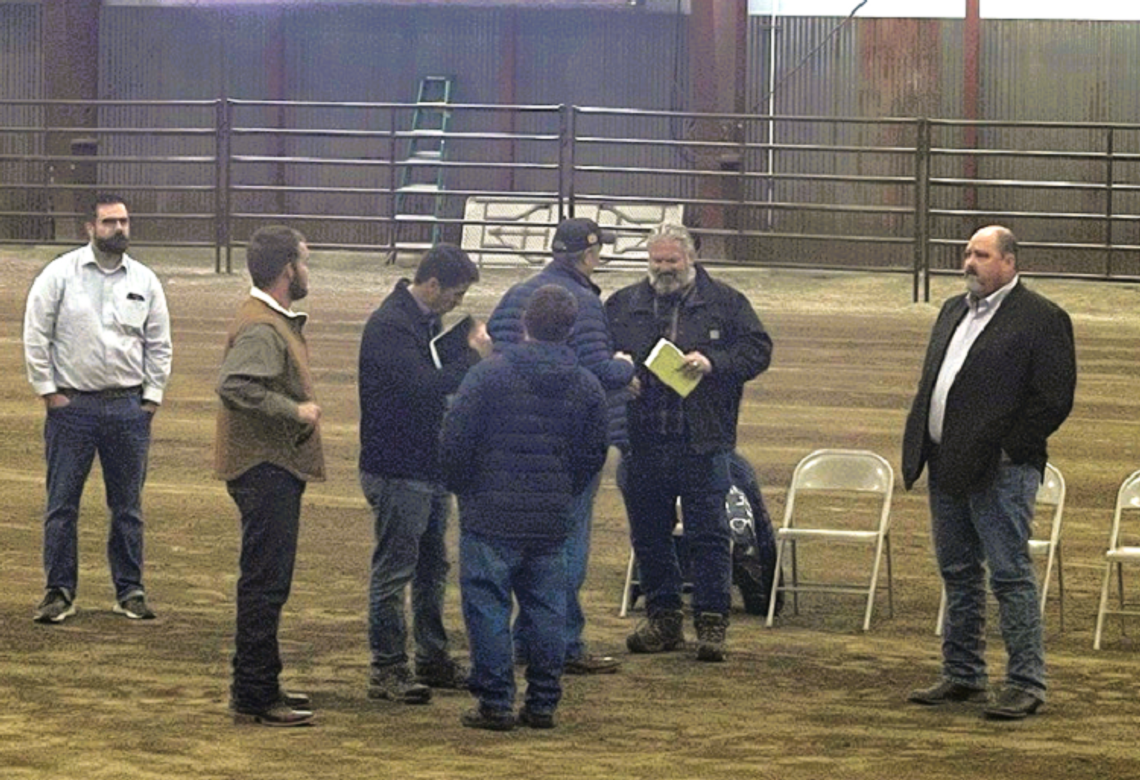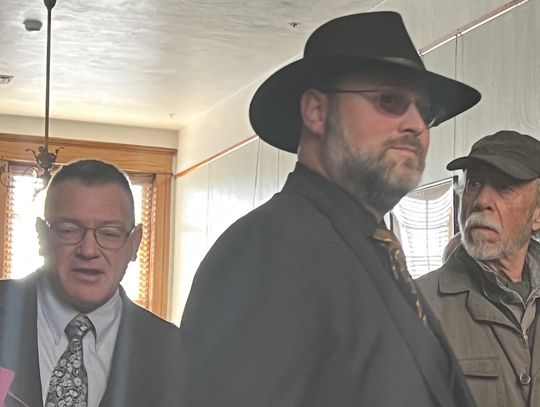They’re building another ditch – only bigger, to relieve the V-Line Canal and Carson Lake Pasture, expecting more water during this 2023 flood event than hit the community during the 2017 Flood.
Community leaders and elected officials from Churchill County, the City of Fallon, Truckee-Carson Irrigation District, and the Bureau of Reclamation, held a Town Hall on Thursday afternoon, March 23, to hear a report regarding the high water mitigation efforts that have been ongoing since the beginning of March.
Caleb Cage who is acting in the capacity of emergency management for the county reviewed and compared the 2017 flood to this year’s water supply, explaining that this year there is more water supply in the Sierra Mountains above 5,000 feet than during the 2017 event. During 2017 there was three times the amount of water that can be held in Lahontan Reservoir in the mountains that community leaders managed through the Newlands Project system, including the Big Dig.
Lahontan can hold just over 300,000 acre-feet of water with the flashboards installed above the dam. This year, forecasting and LiDAR imaging show potential for over 1.2 million acre-feet of water in the snowpack above 5,000 feet elevation.
Jack Worsley, Area Manager of the BOR in Carson City said that new LiDAR imaging will be updated and there is a distinct possibility that the forecasted amount of potential snow-pack will be higher than 1.2 million acre-feet. He said during 2017 the April through July run-off was 500,000 af, and we may be looking at that timeframe this year having 800,000 af of run-off.
He said one main difference this year is the region is saturated. “In 2017 we were coming out of four years of drought, now Carson Valley has 2-3 inches covering it.”
“Our main concern,” said Bus Scharmann, chairman of the County Commission, “is that we keep the water from coming over the dam.” He explained that many communities wait for the damage to happen and then look to the Federal Emergency Management Agency for relief. “We don’t do that here, we focus on prevention.”
According to Scharman, there is a concern that the existing weir may not take enough water in the event of water coming over the dam, which managers call an uncontrolled release. “That’s why we’re building another Big Dig, but even bigger.” He said every effort is being made to keep flows in the Carson River at 1,000 cfs, the maximum amount of water that can flow in the river without causing harm to property owners whose homes are located on the river.
Should water come over the flashboards, the plan is to run anything over 1,000 cfs through the V-Line weir out to Carson Lake and then through the Big Dig. “There is a concern the existing weir will not take enough water, so we’re building another, even bigger. Our goal is to prevent any flooding,” said Scharmann. “This meeting is to make the community aware.”
Mayor Ken Tedford echoed Scharmann’s comments and asked community members to make their friends and neighbors aware that there is a significant event in the works. “There is a level of complacency on the part of the community. It all went great in 2017 so people think everything will be fine. This is a different time. There is more water up there and it isn’t coming down like last time. It is a time and temperature issue, by this time in 2017 the melt was flowing.
Tedford reminded attendees that Lahontan is currently only half full, but once the snow starts melting the reservoir could fill in six days. “No one is picking up sandbags. We don’t want anyone to flood. Convey that message to those around you.” He said everyone involved is doing a great job and everything that can be done is being done. “We need your help in sending out that message. It’s not just these folks here, it is the whole community, NDOT, NDOW, US Fish & Wildlife, the sheriff, and the tribe that all are participating and helping in this issue.
County Manager Jim Barbee asked that the community stay clear of the Casey Road area where the V-Line work is being done as well as work on the Big Dig. “We want to ensure our workers’ safety and have the community keep clear, that road is narrow and there is a lot of work being done building it up to bring in equipment.”
Questions from the audience included what could be done if there are impacts on wells and septic systems of homes near the river. Barbee said there had been no report of that but urged those in attendance to talk with staff after the meeting or anyone experiencing problems to contact the hotline, 775-867-5923, and make sure that information was provided.
He reiterated that everything is being done to keep the river at 1,000 cfs maximum, and the weirs would allow that to happen, with anything over that being released through the weirs and into the Big Dig to release water out of Carson Lake and move it north out into the Carson Sink. Work has begun on the second weir, and it will be completed as soon as possible but it depends on several factors including obtaining a supply of steel coming from California.
In answer to several questions, Barbee said anyone near the river should walk around their property and see if a berm is needed or sandbags. “Imagine worst-case scenarios and reach out for help, we are here to do what is right for the community and we don’t want anyone to flood.”
Barbee also said flood insurance is more difficult to get now that there have been emergency declarations, but some private insurance companies are accepting new applications, and there is the option to apply for FEMA flood insurance, however, there may be waiting periods. He also said there are several places to find information about flooding, water levels and flows, and forecasting including Churchill County, TCID, the City of Fallon, and the National Weather Service.










Comment
Comments